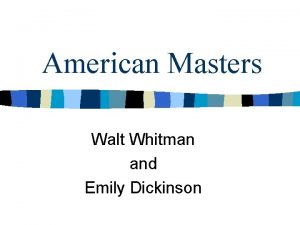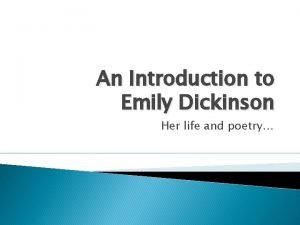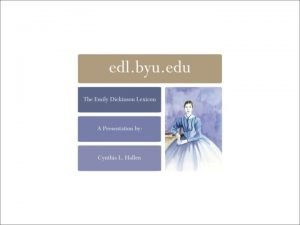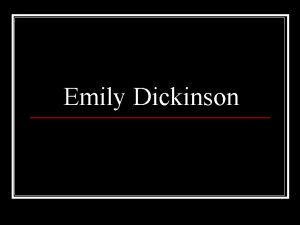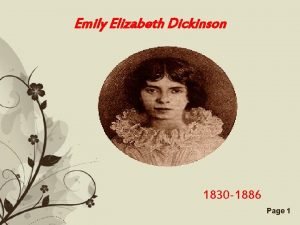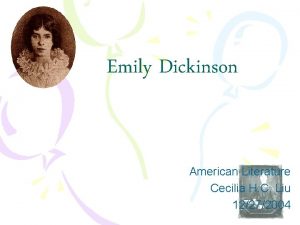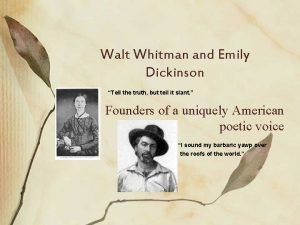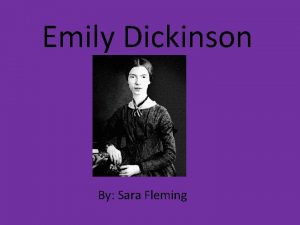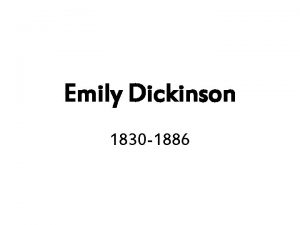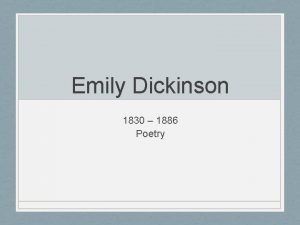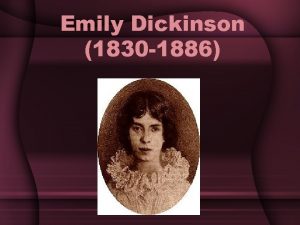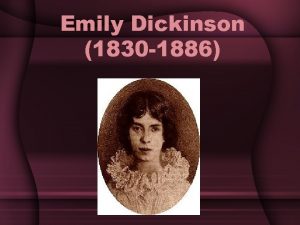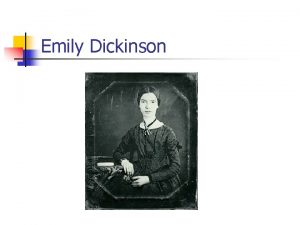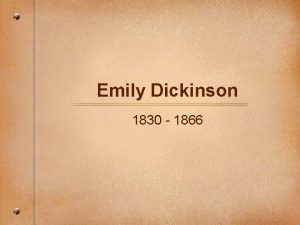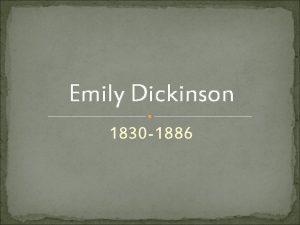American Literary Masters Emily Dickinson Emily Dickinson 1830









- Slides: 9

American Literary Masters: Emily Dickinson

Emily Dickinson 1830 -1886

Emily Dickinson: Biography Born 1830 in Amherst, MA Grandfather founded Amherst College (where she attended) Known as reclusive/private; most of her work crafted in the form of letters/ correspondence written from home ED ‘The woman in white’ “A solemn thing – it was – I said – A Woman – White – to be – And wear – if God should count me fit – Her blameless mystery –” (Dickinson, 1861)

Emily Dickinson: Biography Despite her prolific writing, fewer than a dozen poems were published in her lifetime She died in 1886 (age = 55) Younger sister Lavinia discovered the collection of nearly eighteen hundred poems Dickinson's first volume was published four years after her death. First official anthology 1955 publication of Dickinson's Complete Poems by Thomas H. Johnson

Emily Dickinson: Influences Dickinson’s literary influences: William Wordsworth Ralph Waldo Emerson Henry Wadsworth Longfellow (Kavanagh) Charlotte Bronte (Jane Eyre) William Shakespeare (Othello; King Lear; Hamlet)

Emily Dickinson: Periods Dickinson’s Poetry: Periods Dickinson’s poems generally fall into three distinct periods, the works in each period having certain general characters in common: Pre-1861 Conventional and sentimental in nature 1861 -1865 Vigorous, creative and emotionally driven Themes of life and death Post-1866

Emily Dickinson: Style Dickinson’s Poetry: Style Syntax: Extensive use of dashes Unconventional capitalization Idiosyncratic vocabulary and imagery Use of paradox (self-defeating truth) Structure: Opted for trimeter and tetrameter; avoided pentameter Employed ballad stanza; quatrains ABCB rhyme scheme; slant rhyme Resonances fit to melodies of folk songs and hymns

Emily Dickinson: Themes Dickinson’s Poetry: Major Themes Flowers and gardens One of Dickinson’s greatest passions was botany; saw gardens as “imaginative realms” and their flowers as “emblems for action” The Master poems Confessional poetry addressed to “Signor”/“Sir” Morbidity Fascination with illness, dying and death Gospel poems Preoccupation with the teachings of Jesus Christ The Undiscovered Continent Dickinson saw the mind and spirit as tangible, visitable place

Emily Dickinson: Quotes “My friends are my estate. ” “A word is dead when it is said, some say. I say it just begins to live that day. ” “Morning without you is a dwindled dawn. ” “Saying nothing…sometimes says the most. ” “A wounded deer leaps the highest. ” “To love is so startling it leaves little time for anything else. ” “People need hard times and oppression to develop psychic muscles. ” “I dwell in possibility. ”

